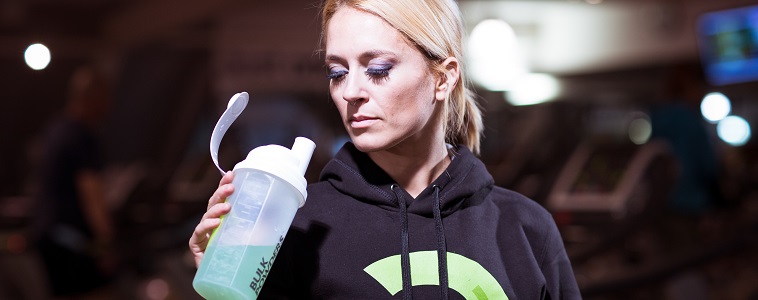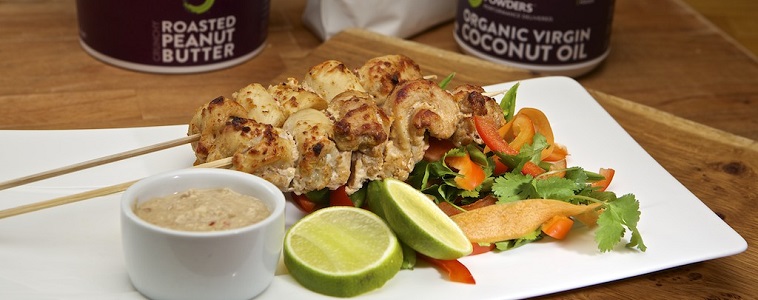With the ever growing trend to want to drop excess body fat to improve performance or achieve the (so-called) perfect body, coupled with the ever growing knowledge and understanding of different foods, there’s no surprise why nutrition has gained a considerable amount of interest. Every day we are faced with new conflicting information on what the ‘best’ diet or supplement for fat loss is and we are led to believe that there’s a single, short-term approach to losing body fat – often done so by cutting corners and taking the easiest, quick fix solution. However, for those just looking for a simple direction to improving body composition (fat to lean mass ratio), it can often be an uphill battle when it comes to knowing exactly what diet or approach is best.
The first thing to always focus on when looking at a new diet is to concentrate on the basics of consistent and structured eating habits, whilst also making conscious decisions on portion sizes, timings of food intake and types of foods consumed around your everyday tasks or exercise. One simple way of achieving this and one way that I was taught when working with many different athletes, is by using The Three T’s Model of Type (type of food), Timing (timing of food intake) and Total (quantity of food consumed). Today, this simple, yet effective process is applied by some of the world’s top performance nutritionists, as a means of serving a useful basis to work off when considering food intake or meal options. The paragraphs herein will help give a little more detail on how this may be applied to everyday life in respect to reducing body fat percentage.
Type.

It is important to understand that all calories differ in terms of their metabolic function in the body and the different types of foods will have a varied response on substrate utilisation (fat or carbohydrate used as energy). A key aspect, in terms of body fat, is carbohydrate intake – or in particular, the glycemic index (GI) of carbohydrates i.e. their ability to raise blood sugar levels (see article: Carbohydrates: should we all just go ‘low carb’?). This can be a very useful means for ensuring that you are consuming the right types of carbs throughout the day to support fat loss.
Whether you regularly carry out steady-state cardio or resistance based training for fat loss it is most suitable to carry out the exercise in a low carbohydrate state to enhance fat oxidation which will lead to controlled fat loss over time. Consuming protein beforehand (Whey Protein or BCAAs) would also help augment muscle protein synthesis without having a negative influence on fat utilisation (Impey et al., 2015). It is important to understand though that exercise intensity and volumes may be lessened with reduced carbohydrate intake. However, a strong coffee or an alternative hit of caffeine may be able to alleviate this!
Again, if the aim is to lose body fat, then it also be useful to refrain from consuming large amounts of carbohydrates within the few hours after training as this would switch off the potential ‘fat burning‘ process. Focusing on the type of foods to consume after training will be important here, and high protein low sugar foods (such as whey) would be the best option for recovery.
Tip 1: fuel endurance and resistance based sessions with high protein but reduce the amount of carbohydrates you consume before, during and after in order to increase fat oxidation. If the goal is performance and not fat loss, then carbohydrate intake is still crucial for reaching optimal training intensities.
Timing.

When aiming to reduce body fat levels it is also imperative to focus on the right timings of your foods (also see article: A Beginner’s Guide to Nutrient Timing). Most people are more active in the morning and afternoon so structuring your main carbohydrate intake around breakfast and lunch and having a reduced portion with your evening meal would be the most beneficial approach for fat loss. The preferred choice of meal for the evening would be something that is high in quality protein (pastured meats) and healthy fats (omega 3 & 6), as unlike simple carbohydrates, this is less likely to be stored as fat.
If you tend to train in the evening you should base your carbohydrate intake on type of session that you’ve had. If the goal of the session was cardio for fat loss then it would be advised to have lower carbohydrates in the evening meal. On the other hand, if your training goal is performance or strength and the aim is quick recovery for a following session then it would be advised to get some form of carbs in to replenish muscle glycogen stores, in addition to protein. Consuming protein at regular intervals throughout the day will also help to maintain satiety as well as sustaining a positive protein balance.
Tip 2: always ensure that you consume carbohydrates during the periods of the day where you are more active (i.e. in the morning and afternoon), and have a regular protein intake throughout the day to maintain a positive protein balance. If you are looking for performance and strength, make sure you consume both protein and carbohydrates around your training to maximise recovery and performance.
Total.

Having looked at the subject of timing and type, the next question to consider is how much of the actual food do we actually need? It is important to remember that, like the other two points, this is highly dependent on many individual factors such as body composition, work schedule, training goals and activity levels etc.
In respect to body fat reduction we should remember the basics that; less calories in than calories expended equals likely weight loss. It is also advised to look at macronutrient intake and focus on increased protein (1.2-1.6g /kg body weight) and fat (0.8-1g / kg body weight) intake, as well as basing your carbohydrate intake on your intensity of training and total energy expenditure. 200-300g carbohydrates per day is thought to be ‘low’ carb, however, this should never be an absolute amount as training levels may vary from day to day. As mentioned, if your main goal is performance and you take part in high intensity based training then your carbohydrate intake would need to be increased, particularly following a session.
Tip 3: ensure your total energy intake is less than your energy expenditure. Increase total protein and fat intake based on body weight and ensure your carbohydrate intake is focused around the intensity and type of training that you are carrying out on a daily basis to ensure adequate recovery.
Take Home…
It goes without saying that accomplishing your body composition goals relies heavily on solid nutrition. In terms of diet and food intake, it is all about experimenting with what food plan best suits you – it should by no means be a ‘one size fits all’ approach. This can often be extremely challenging though due to the amount of fad diets we are often bombarded with by the media. Try to keep things simple and the next time you are constructing your daily meal plans, remember to keep The Three T’s at the front of your mind. Ask yourself if you are consuming the correct types of fluids and foods, are they in the right amount (total) and are they being consumed at the right time.
Author:
Steve has a Masters degree in Sports Physiology and works within the BULK POWDERS™ product team. His role includes all aspects of new product development, from recipe concept and formulation to website content and legislations.
References
Impey, S.G., Smith, D., Robinson, A.L., Owens, D.J., Bartlett, J.D., Smith, K., Limb, M., Tang, J., Fraser, W.D., Close, G.L. & Morton, J.P. (2015). Leucine-enriched protein feeding does not impair exercise-induced free fatty acid availability and lipid oxidation: beneficial implications for training in carbohydrate-restricted states. Amino Acids, 47, 407 – 416.









